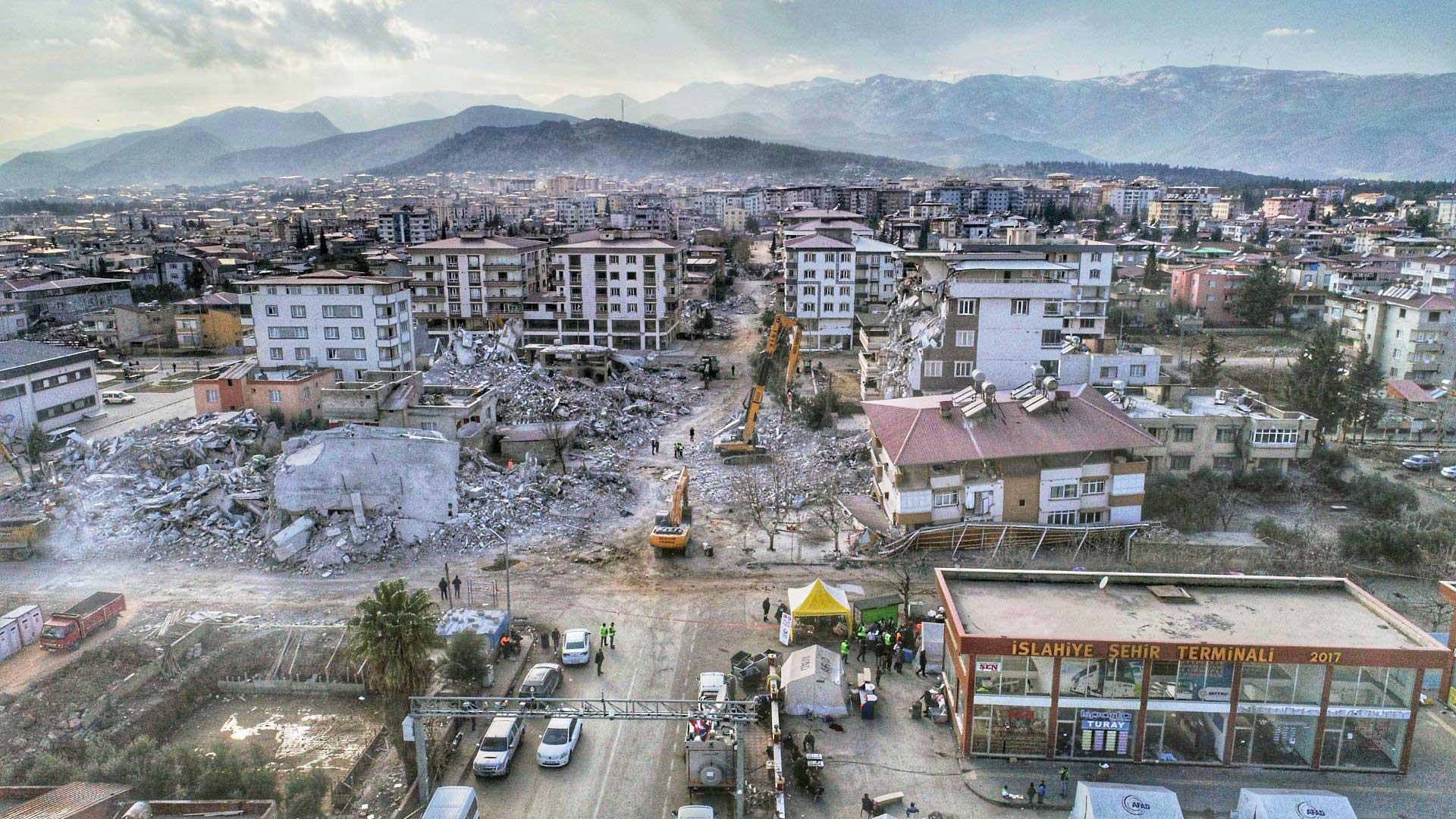Turkey and Syria After the Earthquakes
The series of panel discussions shares lessons learned in the aftermath of two major earthquakes and lays the foundation for enduring recovery.

Turkey and Syria were struck on February 6, 2023, by earthquakes measuring 7.8 and 7.5 magnitudes. Tragically, an estimated 50,000 to 60,000 lives were lost in the wake of these devastating events. The impact was felt deeply, as entire neighborhoods in cities like Kahramanmaraş, Adıyaman, and Hatay were obliterated, leaving over 160,000 buildings either severely damaged or completely collapsed. The immediate humanitarian crisis that arose afterwards required urgent aid and disaster relief efforts, while also raising concerns for the long-term task of creating secure, sustainable, and resilient communities.
“Turkey and Syria After the Earthquakes” is a series of four panel discussions organized by the Collective Action for Readiness, Recovery, and Resilience (CARRRE), a collective of US-based Turkish-American architects and academics. Partnering with AIA New York, Salt, and Columbia Global Centers | Istanbul CARRRE aims to amplify awareness among a global audience regarding the catastrophic repercussions of these earthquakes, and to provide agency to architects, planners, engineers, municipalities, and builders on the ground by assisting with local relief efforts, sharing professional expertise, and aiding in the development of long-term rebuilding strategies. Bringing experts together in their series, CARRRE provided a dynamic international platform for knowledge exchange, dialogue, and the generation of actionable projects.
Titled “Emergency Responses,” the first panel set the stage by offering a comprehensive survey of the affected regions. Delving into ongoing response initiatives, the discussion revolved around exploring strategies within the built environment to meet the pressing needs of the affected communities.
Key themes addressed in the first panel encompassed:
- Swift provision of emergency housing and temporary shelter,
- Restoration of shelter sites and vital infrastructure,
- Unanticipated hurdles in the relief efforts,
- Garnering lessons from international disaster relief endeavors to bolster preparedness.
The second panel of the series, “Mid-Term Relief and Transitional Programs,” shifted its focus towards the challenges stemming from prolonged habitation in temporary disaster shelters. Speakers offered insights into both conventional post-disaster planning strategies and building techniques, while also spotlighting innovative approaches. The discourse covered transitional building techniques for the short to mid-term, along with alternative, innovative, and traditional building methods that ensure a community’s sense of identity within their social and environmental surroundings.
Key themes addressed in the second panel encompassed:
- Exploring innovative building technologies for resilience, transition, and affordability,
- Navigating the realm of transitional construction from short to mid-term developments,
- Integrating long-term planning considerations into short to mid-term projects,
- Defining and nurturing communities in the context of post-disaster reconstruction.
The four-panel series seeks to not only address the immediate challenges arising from catastrophe but to lay the foundation for enduring recovery and transformation. Through these and upcoming panel discussions, CARRRE aims to pave the path to restoration with shared knowledge, inventive strategies, and a steadfast commitment for stronger and more resilient communities.
The first two hybrid panels took place on July 22 and July 29. The third panel will take place on September 30, and the fourth panel on October 21. Keep following us for more information and registration!